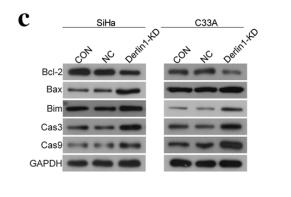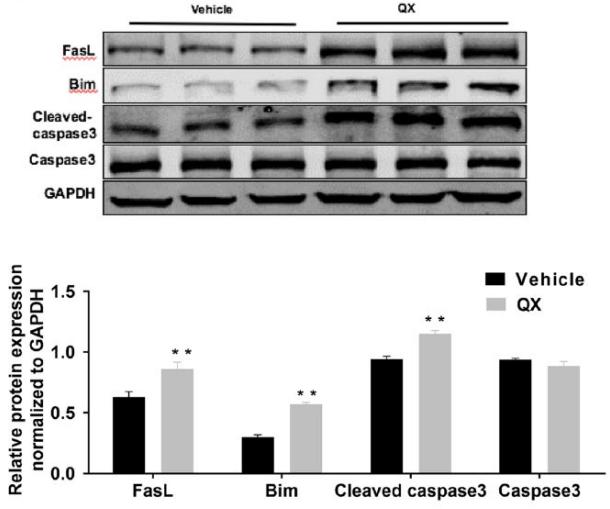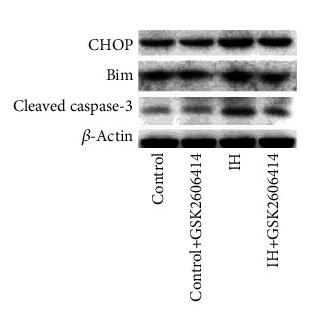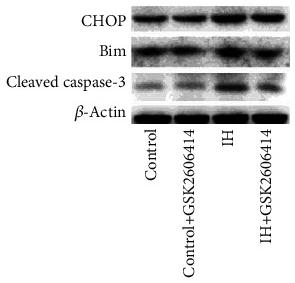Bim Antibody - #DF6093
| Product: | Bim Antibody |
| Catalog: | DF6093 |
| Description: | Rabbit polyclonal antibody to Bim |
| Application: | WB |
| Cited expt.: | WB |
| Reactivity: | Human, Mouse, Rat |
| Prediction: | Pig, Horse, Sheep, Rabbit, Dog |
| Mol.Wt.: | 22kDa; 22kD(Calculated). |
| Uniprot: | O43521 |
| RRID: | AB_2838061 |
Related Downloads
Protocols
Product Info
*The optimal dilutions should be determined by the end user. For optimal experimental results, antibody reuse is not recommended.
*Tips:
WB: For western blot detection of denatured protein samples. IHC: For immunohistochemical detection of paraffin sections (IHC-p) or frozen sections (IHC-f) of tissue samples. IF/ICC: For immunofluorescence detection of cell samples. ELISA(peptide): For ELISA detection of antigenic peptide.
Cite Format: Affinity Biosciences Cat# DF6093, RRID:AB_2838061.
Fold/Unfold
BCL2 like 11; B2L11_HUMAN; BAM; Bcl 2 interacting protein Bim; Bcl 2 related ovarian death agonist; Bcl-2-like protein 11; BCL2 interacting mediator of cell death; BCL2 like 11 (apoptosis facilitator); BCL2 like protein 11; Bcl2-interacting mediator of cell death; Bcl2-L-11; Bcl2l11; BIM alpha6; BIM; BIM beta6; BIM beta7; BimEL; BimL; BOD;
Immunogens
A synthesized peptide derived from human Bim, corresponding to a region within the internal amino acids.
Isoform BimEL, isoform BimL and isoform BimS are the predominant isoforms and are widely expressed with tissue-specific variation. Isoform Bim-gamma is most abundantly expressed in small intestine and colon, and in lower levels in spleen, prostate, testis, heart, liver and kidney.
- O43521 B2L11_HUMAN:
- Protein BLAST With
- NCBI/
- ExPASy/
- Uniprot
MAKQPSDVSSECDREGRQLQPAERPPQLRPGAPTSLQTEPQGNPEGNHGGEGDSCPHGSPQGPLAPPASPGPFATRSPLFIFMRRSSLLSRSSSGYFSFDTDRSPAPMSCDKSTQTPSPPCQAFNHYLSAMASMRQAEPADMRPEIWIAQELRRIGDEFNAYYARRVFLNNYQAAEDHPRMVILRLLRYIVRLVWRMH
Predictions
Score>80(red) has high confidence and is suggested to be used for WB detection. *The prediction model is mainly based on the alignment of immunogen sequences, the results are for reference only, not as the basis of quality assurance.
High(score>80) Medium(80>score>50) Low(score<50) No confidence
Research Backgrounds
Induces apoptosis and anoikis. Isoform BimL is more potent than isoform BimEL. Isoform Bim-alpha1, isoform Bim-alpha2 and isoform Bim-alpha3 induce apoptosis, although less potent than isoform BimEL, isoform BimL and isoform BimS. Isoform Bim-gamma induces apoptosis. Isoform Bim-alpha3 induces apoptosis possibly through a caspase-mediated pathway. Isoform BimAC and isoform BimABC lack the ability to induce apoptosis.
Phosphorylation at Ser-69 by MAPK1/MAPK3 leads to interaction with TRIM2 and polyubiquitination, followed by proteasomal degradation. Deubiquitination catalyzed by USP27X stabilizes the protein (By similarity).
Ubiquitination by TRIM2 following phosphorylation by MAPK1/MAPK3 leads to proteasomal degradation. Conversely, deubiquitination catalyzed by USP27X stabilizes the protein.
Endomembrane system>Peripheral membrane protein.
Note: Associated with intracytoplasmic membranes.
Mitochondrion.
Note: Translocates from microtubules to mitochondria on loss of cell adherence.
Mitochondrion.
Mitochondrion.
Mitochondrion.
Isoform BimEL, isoform BimL and isoform BimS are the predominant isoforms and are widely expressed with tissue-specific variation. Isoform Bim-gamma is most abundantly expressed in small intestine and colon, and in lower levels in spleen, prostate, testis, heart, liver and kidney.
The BH3 motif is required for interaction with Bcl-2 proteins and cytotoxicity.
Belongs to the Bcl-2 family.
Research Fields
· Cellular Processes > Cell growth and death > Apoptosis. (View pathway)
· Cellular Processes > Cell growth and death > Apoptosis - multiple species. (View pathway)
· Environmental Information Processing > Signal transduction > FoxO signaling pathway. (View pathway)
· Environmental Information Processing > Signal transduction > PI3K-Akt signaling pathway. (View pathway)
· Human Diseases > Drug resistance: Antineoplastic > EGFR tyrosine kinase inhibitor resistance.
· Human Diseases > Endocrine and metabolic diseases > Non-alcoholic fatty liver disease (NAFLD).
· Human Diseases > Cancers: Overview > Pathways in cancer. (View pathway)
· Human Diseases > Cancers: Overview > MicroRNAs in cancer.
· Human Diseases > Cancers: Specific types > Colorectal cancer. (View pathway)
References
Application: WB Species: human Sample: Jurkat cells
Application: WB Species: human Sample: CC cells
Application: WB Species: Mouse Sample: hippocampal tissues
Application: WB Species: mouse Sample: hippocampal
Application: WB Species: Mice Sample: hippocampal tissue
Application: WB Species: mouse Sample: tumor
Restrictive clause
Affinity Biosciences tests all products strictly. Citations are provided as a resource for additional applications that have not been validated by Affinity Biosciences. Please choose the appropriate format for each application and consult Materials and Methods sections for additional details about the use of any product in these publications.
For Research Use Only.
Not for use in diagnostic or therapeutic procedures. Not for resale. Not for distribution without written consent. Affinity Biosciences will not be held responsible for patent infringement or other violations that may occur with the use of our products. Affinity Biosciences, Affinity Biosciences Logo and all other trademarks are the property of Affinity Biosciences LTD.







